formerly eScholarship Editions


|
|
|
|
Your request for similar items found 20 book(s). | Modify Search | Displaying 1 - 20 of 20 book(s) | |
| 1. | 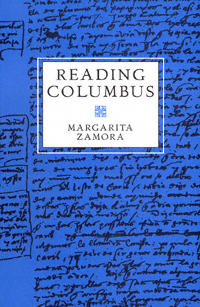 | Title: Reading Columbus Author: Zamora, Margarita Published: University of California Press, 1993 Subjects: Literature | Latin American Studies | Latin American History | European Literature Publisher's Description: Christopher Columbus authored over a hundred documents, many of them letters giving testimony on the Discovery to Isabela and Ferdinand. In this first book in English to focus specifically on these writings, Margarita Zamora offers an original analysis of their textual problems and ideological implications. Her comprehensive study takes into account the newly discovered "Libro Copiador," which includes previously unknown letters from Columbus to the Crown.Zamora examines those aspects of the texts that have caused the most anxiety and disagreement among scholars - questions concerning Columbus's destination, the authenticity and authority of the texts attributed to him, Las Casas's editorial role, and Columbus's views on the Indians. In doing so she opens up the vast cultural context of the Discovery. Exploring the ways in which the first images of America as seen through European eyes both represented and helped shape the Discovery, she maps the inception and growth of a discourse that was to dominate the colonizing of the New World. [brief] Similar Items |
| 2. | 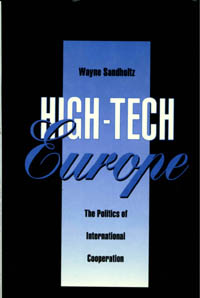 | Title: High-Tech Europe: the politics of international cooperation Author: Sandholtz, Wayne Published: University of California Press, 1992 Subjects: Politics | Public Policy | Economics and Business | Technology and Society Publisher's Description: A study of cooperative efforts in the high-tech industries of Europe. Sandholtz examines why collaboration came late to these countries, how protective walls came down, how countries work together in economically sensitive areas.Governments have recognized for decades the dynamic role played by microelectronics, computers, and telecommunications in the modern economy. Although Europe's deficiencies in these crucial sectors had long been acknowledged, it was not until the 1980s that European nations began collaborating to develop and promote high-tech industries. Their collaboration gives rise to many questions. Why, for example, did the joint efforts come at such a late date rather than in the 1960s or 70s? And how is it possible that they work together in economically sensitive areas? These questions point to fundamental issues in the areas of international cooperation, international institutions, and technology policy.Before the institution of the collaborative programs ESPRIT (European Strategic Programme for Research and Development in Information Technology), RACE (R & D in Advanced Communications-technologies in Europe), and EUREKA (European Research Coordination Agency) in the 1980s, each European country sought its own technological renaissance through protection of national firms behind walls of technical standards, procurement preferences, and research subsidies. Here is a thorough, carefully researched work that examines the breakdown of these walls. It will appeal to political scientists, economists, and scholars of technology and Western Europe interested in the political contours of the high-tech landscape. [brief] Similar Items |
| 3. | 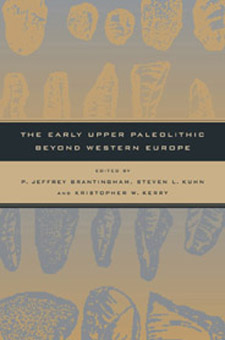 | Title: The early Upper Paleolithic beyond Western Europe Author: Brantingham, P. Jeffrey 1970- Published: University of California Press, 2004 Subjects: Anthropology | Archaeology | European History | European History | Middle Eastern History Publisher's Description: This volume brings together prominent archaeologists working in areas outside Western Europe to discuss the most recent evidence for the origins of the early Upper Paleolithic and its relationship to the origin of modern humans. With a wealth of primary data from archaeological sites and regions that have never before been published and discussions of materials from difficult-to-find sources, the collection urges readers to reconsider the process of modern human behavioral origins. Archaeological evidence continues to play a critical role in debates over the origins of anatomically modern humans. The appearance of novel Upper Paleolithic technologies, new patterns of land use, expanded social networks, and the emergence of complex forms of symbolic communication point to a behavioral revolution beginning sometime around 45,000 years ago. Until recently, most of the available evidence for this revolution derived from Western European archaeological contexts that suggested an abrupt replacement of Mousterian Middle Paleolithic with Aurignacian Upper Paleolithic adaptations. In the absence of fossil association, the behavioral transition was thought to reflect the biological replacement of archaic hominid populations by intrusive modern humans. The contributors present new archaeological evidence that tells a very different story: The Middle-Upper Paleolithic transitions in areas as diverse as the Levant, Eastern-Central Europe, and Central and Eastern Asia are characterized both by substantial behavioral continuity over the period 45,000-25,000 years ago and by a mosaic-like pattern of shifting adaptations. Together these essays will enliven and enrich the discussion of the shift from archaic to modern behavioral adaptations. [brief] Similar Items |
| 4. | 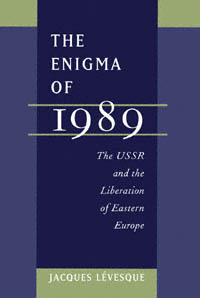 | Title: The enigma of 1989: the USSR and the liberation of Eastern Europe Author: Lévesque, Jacques Published: University of California Press, 1997 Subjects: Politics | History | European History | Russian and Eastern European Studies Publisher's Description: The Soviet external empire fell in 1989 virtually without bloodshed. The domino-like collapse of the communist regimes of Eastern Europe was not anticipated by political experts in either the East or the West. Most surprising of all was the Soviet Union's permissive reactions to the secession. For the first time in modern history, such an epochal upheaval could take place not only without war but also without major international tensions.This book is the first comprehensive scholarly attempt to elucidate Soviet behavior toward Eastern Europe in 1989. Jacques Lévesque thoroughly analyses the policies of the USSR toward Eastern Europe during the Gorbachev era and clarifies the goals that underpinned these policies.Based on interviews with political leaders and exhaustive research in Russia, Czechoslovakia, Hungary, Poland, and the other ex-Warsaw Pact countries, this book traces the nuances of each country's case as a set of continually changing, mutually reinforcing causes and effects. [brief] Similar Items |
| 5. | 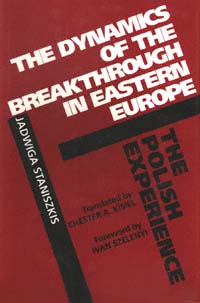 | Title: The dynamics of the breakthrough in Eastern Europe: the Polish experience Author: Staniszkis, Jadwiga Published: University of California Press, 1991 Subjects: Politics | European History | Sociology Publisher's Description: Understanding the dramatic political, social, and economic changes that have taken place in Poland in the mid-1980s is one key to predicting the future of the communist bloc. Jadwiga Staniszkis, an influential, internationally known expert on contemporary trends in Eastern Europe, provides an insider's analysis that deserves the attention of all scholars interested in the region.Staniszkis presents the breakthrough of 1989 as a consequence not only of systemic contradictions within socialism but also of a series of chance events. These events include unique historical circumstances such as the emergence of the "globalist" faction in Mosow, with its new, world-system perception of crisis, and the discovery of the round-table technique as a productive ritual of communication, imitated all over Eastern Europe. After describing the development, collapse, and reorganization of a "new center" in Poland in 1989-1990, she discusses the first attempt at privatizing the economy. Her analysis of the dilemmas accompanying breakthrough and transition is an invaluable guide to the challenges that face both capitalism and democracy in Eastern Europe. [brief] Similar Items |
| 6. | 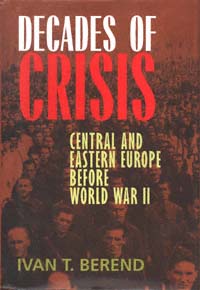 | Title: Decades of crisis: Central and Eastern Europe before World War II Author: Berend, T. Iván (Tibor Iván) 1930- Published: University of California Press, 1998 Subjects: History | European History | European Studies | Russian and Eastern European Studies | Economics and Business Publisher's Description: Only by understanding Central and Eastern Europe's turbulent history during the first half of the twentieth century can we hope to make sense of the conflicts and crises that have followed World War II and, after that, the collapse of Soviet-controlled state socialism. Ivan Berend looks closely at the fateful decades preceding World War II and at twelve countries whose absence from the roster of major players was enough in itself, he says, to precipitate much of the turmoil.As waves of modernization swept over Europe, the less developed countries on the periphery tried with little or no success to imitate Western capitalism and liberalism. Instead they remained, as Berend shows, rural, agrarian societies notable for the tenacious survival of feudal and aristocratic institutions. In that context of frustration and disappointment, rebellion was inevitable. Berend leads the reader skillfully through the maze of social, cultural, economic, and political changes in Hungary, Czechoslovakia, Yugoslavia, Poland, Romania, Bulgaria, Albania, Austria, Latvia, Lithuania, Estonia, and the Soviet Union, showing how every path ended in dictatorship and despotism by the start of World War II. [brief] Similar Items |
| 7. | 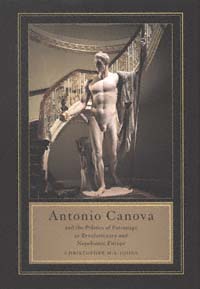 | Title: Antonia Canova and the politics of patronage in revolutionary and Napoleonic Europe Author: Johns, Christopher M. S Published: University of California Press, 1998 Subjects: Art | Art History | European Studies | European History Publisher's Description: The Venetian sculptor Antonio Canova (1757-1822) was Europe's most celebrated artist from the end of the ancien régime to the early years of the Restoration, an era when the traditional relationship between patrons and artists changed drastically. Christopher M. S. Johns's refreshingly original study explores a neglected facet of Canova's career: the effects of patrons, patronage, and politics on his choice of subjects and manner of working. While other artists produced art in the service of the state, Canova resisted the blandishments of the political powers that commissioned his works.Johns uses letters, diaries, and biographies to establish a political personality for Canova as an individual and an artist of international reputation. Though he had patrons as diverse as the pope, Napoleon, the Austrian Hapsburgs, the Prince Regent of Great Britain, and the Republic of Venice, Canova remained steadily employed and did so without controversy. A conservative and a Catholic, he devised a strategy that enabled him to work for patrons who were avowed enemies while remaining true to the cultural and artistic heritage of his Italian homeland. Using myth and funerary images and avoiding portraiture, he disguised the meanings behind his works and thus avoided their being identified with any political purpose.Johns greatly enhances our understanding of Canova's place in European art and political history, and in showing the influence of censorship, display, visual narrative, and propaganda, he highlights issues as contentious today as they were in Canova's time. [brief] Similar Items |
| 8. | 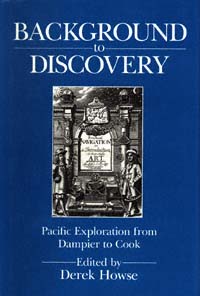 | Title: Background to discovery: Pacific exploration from Dampier to Cook Author: Howse, Derek Published: University of California Press, 1990 Subjects: History | European History | Travel | Geography Publisher's Description: Background to Discovery recounts the great voyages of discovery, from Dampier to Cook, that excited such fervent political and popular interest in eighteenth-century Europe. Perhaps this book's greatest strength lies in its remarkable synthesis of both the achievements of European maritime exploration and the political, economic, and scientific motives behind it. Writing essays on the literary and artistic response to the voyages as well, the contributors collectively provide a rich source for historians, geographers, and anyone interested in the history of voyage and travel. [brief] Similar Items |
| 9. |  | Title: Loyola's acts: the rhetoric of the self Author: Boyle, Marjorie O'Rourke 1943- Published: University of California Press, 1997 Subjects: Literature | Renaissance History | Christianity | Rhetoric | Art History | Medieval History Publisher's Description: This revisionist view of Ignatius Loyola argues that his "autobiography" - until now taken to be a literal, documentary account - is in reality a work of rhetoric, a moral narrative that exploits the techniques of fiction. In radically reinterpreting this canonical text, our main source of information about the founder of the largest and most powerful religious order in Roman Catholicism, Boyle paints a vivid picture of Loyola's world. She surveys rhetorical and artistic theory, religious iconography, everyday custom, and an astonishing array of scenes and subjects: from curiosity, to codes of honor, to the holy places of Spain, to the significance of apparitions and flying serpents.Written in the tradition of Renaissance studies on individualism, Loyola's Acts engages current interest in autobiography and in the history of private life. The book also provides a powerful heuristic for interpreting a wide range of texts of the Christian tradition. Finally, this secular treatment of a canonized saint provides revealing insights into how a prestigious sixteenth-century figure like Loyola understood himself. [brief] Similar Items |
| 10. |  | Title: Making Muslim space in North America and Europe Author: Metcalf, Barbara Daly 1941- Published: University of California Press, 1996 Subjects: Anthropology | History | Islam | Middle Eastern Studies | Postcolonial Studies Publisher's Description: Focusing on the private and public use of space, this volume explores the religious life of the new Muslim communities in North America and Europe. Unlike most studies of immigrant groups, these essays concentrate on cultural practices and expressions of everyday life rather than on the political issues that dominate today's headlines. The authors emphasize the cultural strength and creativity of communities that draw upon Islamic symbols and practices to define "Muslim space" against the background of a non-Muslim environment.The range of perspectives is broad, encompassing middle-class professionals, mosque congregations, factory workers in France and the north of England, itinerant African traders, and prison inmates in New York. The truism that "Islam is a religion of the word" takes on concrete meaning as these disparate communities find ways to elaborate word-centered ritual and to have the visual and aural presence of sacred words in the spaces they inhabit.The volume includes 46 black-and-white photographs that illustrate Muslim populations in Edmonton, Philadelphia, the Green Haven Correction Facility, Manhattan, Marseilles, Berlin, and London, among other places. The focus on space directs attention to the new kinds of boundaries and consciousness that exist not only for these Muslim populations, but for people from all backgrounds in today's ever more integrated world. [brief] Similar Items |
| 11. | 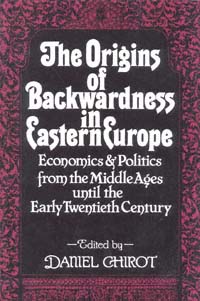 | Title: The origins of backwardness in Eastern Europe: economics and politics from the Middle Ages until the early twentieth century Author: Chirot, Daniel Published: University of California Press, 1989 Subjects: History | European History | Politics | Economics and Business Publisher's Description: Reaching back centuries, this study makes a convincing case for very deep roots of current Eastern European backwardness. Its conclusions are suggestive for comparativists studying other parts of the world, and useful to those who want to understand contemporary Eastern Europe's past. Like the rest of the world except for that unique part of the West which has given us a false model of what was "normal," Eastern Europe developed slowly. The weight of established class relations, geography, lack of technological innovation, and wars kept the area from growing richer.In the nineteenth century the West exerted a powerful influence, but it was political more than economic. Nationalism and the creation of newly independent aspiring nation-states then began to shape national economies, often in unfavorable ways.One of this book's most important lessons is that while economics may limit the freedom of action of political players, it does not determine political outcomes. The authors offer no simple explanations but rather a theoretically complex synthesis that demonstrates the interaction of politics and economics. [brief] Similar Items |
| 12. | 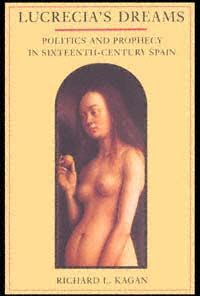 | Title: Lucrecia's dreams: politics and prophecy in sixteenth-century Spain Author: Kagan, Richard L 1943- Published: University of California Press, 1990 Subjects: History | Renaissance History | Women's Studies | Gender Studies Publisher's Description: Branded by the Spanish Inquisition as an "evil dreamer," a "notorious mother of prophets," the teenager Lucrecia de León had hundreds of bleak but richly imaginative dreams of Spain's future that became the stuff of political controversy and scandal. Based upon surviving transcripts of her dreams and on the voluminous records of her trial before the Inquisition, Lucrecia's Dreams traces the complex personal and political ramifications of Lucrecia's prophetic career. This hitherto unexamined episode in Spanish history sheds new light on the history of women as well as on the history of dream interpretation.Charlatan or clairvoyant, sinner or saint, Lucrecia was transformed by her dreams into a cause celébre , the rebellious counterpart to that other extraordinary woman of Golden Age Spain, St. Theresa of Jesus. Her supporters viewed her as a divinely inspired seer who exposed the personal and political shortcomings of Philip II of Spain. In examining the relation of dreams and prophecy to politics, Richard Kagan pays particular attention to the activities of the streetcorner prophets and female seers who formed the political underworld of sixteenth-century Spain. [brief] Similar Items |
| 13. | 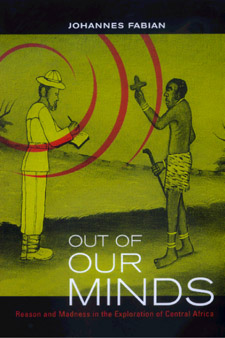 | Title: Out of our minds: reason and madness in the exploration of Central Africa: the Ad. E. Jensen lectures at the Frobenius Institut, University of Frankfurt Author: Fabian, Johannes Published: University of California Press, 2000 Subjects: Anthropology | African History | Cultural Anthropology Publisher's Description: Explorers and ethnographers in Africa during the period of colonial expansion are usually assumed to have been guided by rational aims such as the desire for scientific knowledge, fame, or financial gain. This book, the culmination of many years of research on nineteenth-century exploration in Central Africa, provides a new view of those early European explorers and their encounters with Africans. Out of Our Minds shows explorers were far from rational--often meeting their hosts in extraordinary states influenced by opiates, alcohol, sex, fever, fatigue, and violence. Johannes Fabian presents fascinating and little-known source material, and points to its implications for our understanding of the beginnings of modern colonization. At the same time, he makes an important contribution to current debates about the intellectual origins and nature of anthropological inquiry. Drawing on travel accounts--most of them Belgian and German--published between 1878 and the start of World War I, Fabian describes encounters between European travelers and the Africans they met. He argues that the loss of control experienced by these early travelers actually served to enhance cross-cultural understanding, allowing the foreigners to make sense of strange facts and customs. Fabian's provocative findings contribute to a critique of narrowly scientific or rationalistic visions of ethnography, illuminating the relationship between travel and intercultural understanding, as well as between imperialism and ethnographic knowledge. [brief] Similar Items |
| 14. | 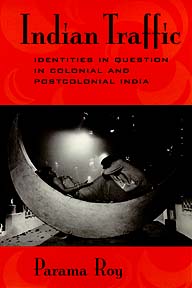 | Title: Indian traffic: identities in question in colonial and postcolonial India Author: Roy, Parama Published: University of California Press, 1998 Subjects: Postcolonial Studies | Literary Theory and Criticism | South Asia | Gender Studies Publisher's Description: The continual, unpredictable, and often violent "traffic" between identities in colonial and postcolonial India is the focus of Parama Roy's stimulating and original book. Mimicry has been commonly recognized as an important colonial model of bourgeois/elite subject formation, and Roy examines its place in the exchanges between South Asian and British, Hindu and Muslim, female and male, and subaltern and elite actors. Roy draws on a variety of sources - religious texts, novels, travelogues, colonial archival documents, and films - making her book genuinely interdisciplinary. She explores the ways in which questions of originality and impersonation function, not just for "western" or "westernized" subjects, but across a range of identities. For example, Roy considers the Englishman's fascination with "going native," an Irishwoman's assumption of Hindu feminine celibacy, Gandhi's impersonation of femininity, and a Muslim actress's emulation of a Hindu/Indian mother goddess. Familiar works by Richard Burton and Kipling are given fresh treatment, as are topics such as the "muscular Hinduism" of Swami Vivekananda. Indian Traffic demonstrates that questions of originality and impersonation are in the forefront of both the colonial and the nationalist discourses of South Asia and are central to the conceptual identity of South Asian postcolonial theory itself. [brief] Similar Items |
| 15. | 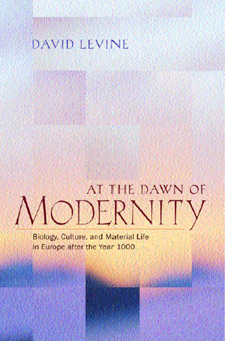 | Title: At the dawn of modernity: biology, culture, and material life in Europe after the year 1000 Author: Levine, David 1946- Published: University of California Press, 2001 Subjects: Sociology | Social Theory | European History | European Studies Publisher's Description: Looking at a neglected period in the social history of modernization, David Levine investigates the centuries that followed the year 1000, when a new kind of society emerged in Europe. New commercial routines, new forms of agriculture, new methods of information technology, and increased population densities all played a role in the prolonged transition away from antiquity and toward modernity. At the Dawn of Modernity highlights both "top-down" and "bottom-up" changes that characterized the social experience of early modernization. In the former category are the Gregorian Reformation, the imposition of feudalism, and the development of centralizing state formations. Of equal importance to Levine's portrait of the emerging social order are the bottom-up demographic relations that structured everyday life, because the making of the modern world, in his view, also began in the decisions made by countless men and women regarding their families and circumstances. Levine ends his story with the cataclysm unleashed by the Black Death in 1348, which brought three centuries of growth to a grim end. [brief] Similar Items |
| 16. | 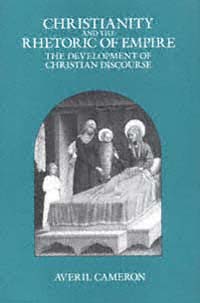 | Title: Christianity and the rhetoric of empire: the development of Christian discourse Author: Cameron, Averil Published: University of California Press, 1991 Subjects: Classics | Classical Religions | Classical History | History | Christianity | Ancient History | Rhetoric Publisher's Description: Many reasons can be given for the rise of Christianity in late antiquity and its flourishing in the medieval world. In asking how Christianity succeeded in becoming the dominant ideology in the unpromising circumstances of the Roman Empire, Averil Cameron turns to the development of Christian discourse over the first to sixth centuries A.D., investigating the discourse's essential characteristics, its effects on existing forms of communication, and its eventual preeminence. Scholars of late antiquity and general readers interested in this crucial historical period will be intrigued by her exploration of these influential changes in modes of communication.The emphasis that Christians placed on language - writing, talking, and preaching - made possible the formation of a powerful and indeed a totalizing discourse, argues the author. Christian discourse was sufficiently flexible to be used as a public and political instrument, yet at the same time to be used to express private feelings and emotion. Embracing the two opposing poles of logic and mystery, it contributed powerfully to the gradual acceptance of Christianity and the faith's transformation from the enthusiasm of a small sect to an institutionalized world religion. [brief] Similar Items |
| 17. | 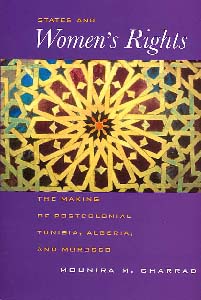 | Title: States and women's rights: the making of postcolonial Tunisia, Algeria, and Morocco Author: Charrad, M. (Mounira) Published: University of California Press, 2001 Subjects: Sociology | Politics | Middle Eastern Studies | Middle Eastern History | Women's Studies | Postcolonial Studies | Law Publisher's Description: At a time when the situation of women in the Islamic world is of global interest, here is a study that unlocks the mystery of why women's fates vary so greatly from one country to another. Mounira M. Charrad analyzes the distinctive nature of Islamic legal codes by placing them in the larger context of state power in various societies. Charrad argues that many analysts miss what is going on in Islamic societies because they fail to recognize the logic of the kin-based model of social and political life, which she contrasts with the Western class-centered model. In a skillful synthesis, she shows how the logic of Islamic legal codes and kin-based political power affect the position of women. These provide the key to Charrad's empirical puzzle: why, after colonial rule, women in Tunisia gained broad legal rights (even in the absence of a feminist protest movement) while, despite similarities in culture and religion, women remained subordinated in post-independence Morocco and Algeria. Charrad's elegant theory, crisp writing, and solid scholarship make a unique contribution in developing a state-building paradigm to discuss women's rights.This book will interest readers in the fields of sociology, politics, law, women's studies, postcolonial studies, Middle Eastern studies, Middle Eastern history, French history, and Maghrib studies. [brief] Similar Items |
| 18. | 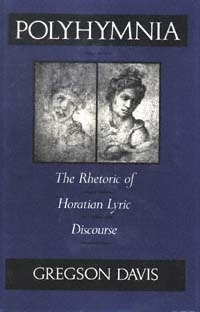 | Title: Polyhymnia: the rhetoric of Horatian lyric discourse Author: Davis, Gregson Published: University of California Press, 1991 Subjects: Classics | Classical Literature and Language | Rhetoric Publisher's Description: Horace's Odes have a surface translucency that belies their rhetorical sophistication. Gregson Davis brings together recent trends in the study of Augustan poetry and critical theory and deftly applies them to individual poems. Exploring four rhetorical strategies - what he calls modes of assimilation, authentication, consolation, and praise and dispraise - Davis produces enlightening, new interpretations of this classic work. Polyhymnia , named after one of the Muses invoked in Horace's opening poem, revises the common image of Horace as a complacent, uncomplicated, and basically superficial singer. Focusing on the artistic persona - the lyric "self" that is constituted in the text - Davis explores how the lyric speaker constructs subtle "arguments" whose building-blocks are topoi, recurrent motifs, and generic conventions. By examining the substructure of lyric argument in groupings of poems sharing similar strategies, the author discloses the major principles that inform Horatian lyric composition. [brief] Similar Items |
| 19. | 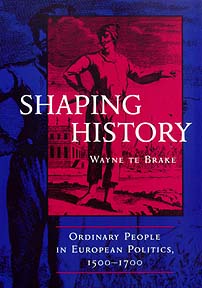 | Title: Shaping history: ordinary people in European politics, 1500-1700 Author: Te Brake, Wayne Ph Published: University of California Press, 1998 Subjects: History | European History | European Studies | Politics Publisher's Description: As long as there have been governments, ordinary people have been acting in a variety of often informal or extralegal ways to influence the rulers who claimed authority over them. Shaping History shows how ordinary people broke down the institutional and cultural barriers that separated elite from popular politics in sixteenth- and seventeenth-century Europe and entered fully into the historical process of European state formation. Wayne te Brake's outstanding synthesis builds on the many studies of popular political action in specific settings and conflicts, locating the interaction of rulers and subjects more generally within the multiple political spaces of composite states. In these states, says Te Brake, a broad range of political subjects, often religiously divided among themselves, necessarily aligned themselves with alternative claimants to cultural and political sovereignty in challenging the cultural and fiscal demands of some rulers. This often violent interaction between subjects and rulers had particularly potent consequences during the course of the Reformation, the Counter-Reformation, and the Crisis of the Seventeenth Century. But, as Te Brake makes clear, it was an ongoing political process, not a series of separate cataclysmic events. Offering a compelling alternative to traditionally elite-centered accounts of territorial state formation in Europe, this book calls attention to the variety of ways ordinary people have molded and shaped their own political histories. [brief] Similar Items |
| 20. | 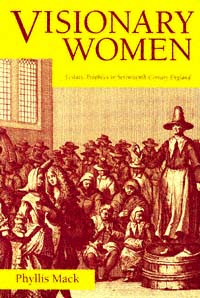 | Title: Visionary Women: ecstatic prophecy in seventeenth-century England Author: Mack, Phyllis Published: University of California Press, 1995 Subjects: History | European History | Christianity | Women's Studies Similar Items |